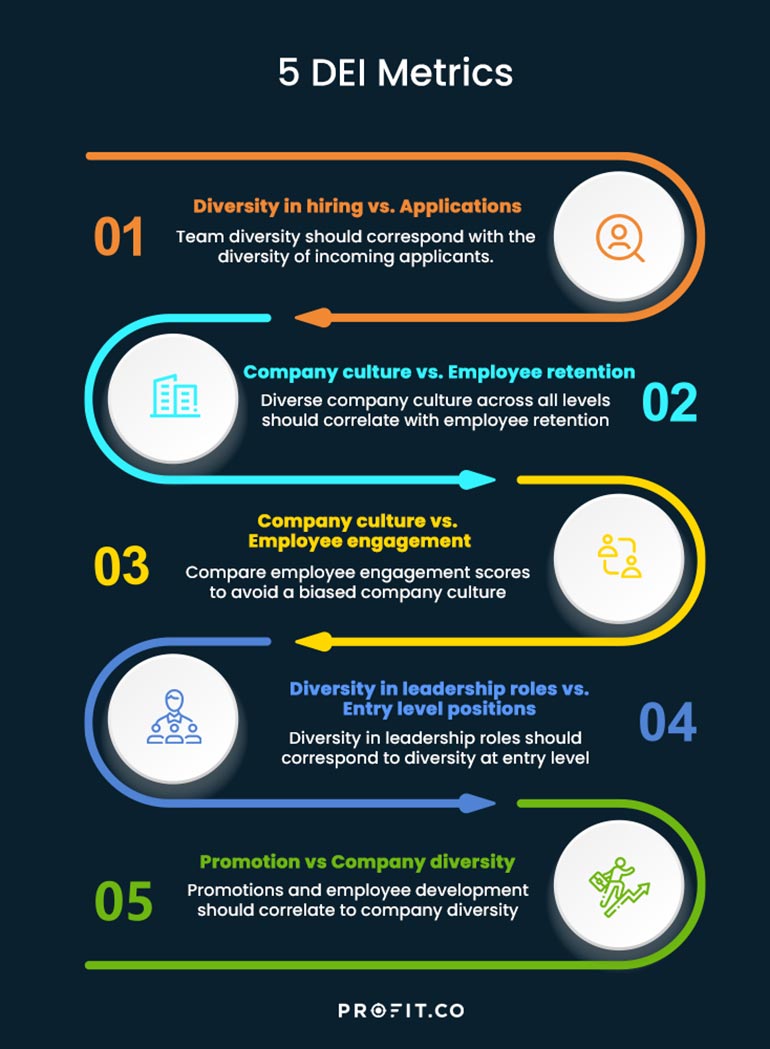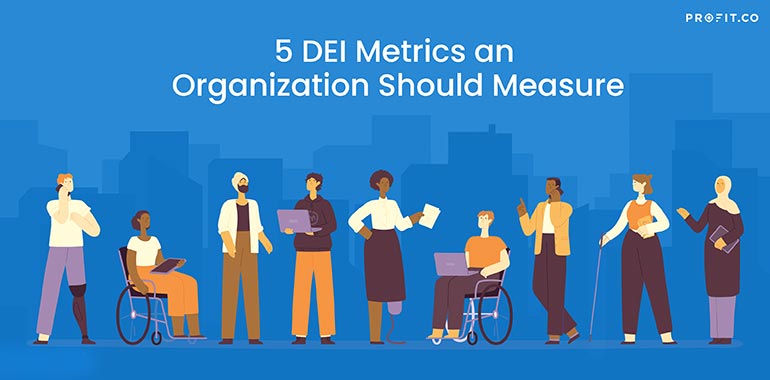Diversity, Equity, and Inclusion (DEI) programs are often put into place by organizations to reduce unconscious bias and workplace discrimination. However, there seems to be a mismatch in what was intended and what the outcome is. In order to make DEI initiatives do what they were intended to do, HR managers are using diversity metrics to understand pain points and get feedback.
How to measure diversity metrics?
For an organization to be able to successfully measure how diverse or inclusive it is, it needs to know what to measure, and have the proper tools to measure. Using an agile OKR tool to align DEI objectives to measurable key results can help the organization track the progress towards an inclusive organization.
A diverse mix of voices leads to better discussions, decisions, and outcomes for everyone.
Following are 5 diversity metrics to focus on:
1. Diversity in hiring vs. applications
2. Employee retention
3. Employee engagement
4. Diversity in leadership roles
5. Promotion

Get started on an intuitive and agile OKR software today to track your organization’s diversity goals.
1. Diversity in hiring vs. applications
To be sure that the organization is hiring diverse individuals, take a look at who is applying for open positions versus who is being hired.
If there is diversity in applications but the team lacks diversity, then this is an indication that the hiring process might be biased. Organizations can keep track of this bias by using a hiring manager satisfaction survey. This survey can provide insights into the mindset of the hiring managers and eventually help set up processes to eliminate it. Ideally, team diversity should correspond with the diversity in applicants
Take measures to eliminate bias during the hiring process. One way to do this is to have diversity in the hiring panel as well. This would help attract diverse candidates, as well as for the organization to be unbiased towards candidates from various backgrounds, races, gender identities, sexual orientations, religious beliefs, and more.
2. Employee retention
Keep an eye on employee turnover. Are employees from the organization’s diverse hires leaving at a higher rate than others? If yes, the organization might be facing an inclusivity problem. Those employees probably don’t feel like they belong on the team.
It’s not just about getting the diversity boxes checked. The organization has to mean it, diversity needs to be a part of company culture across all levels.
3. Employee engagement
One of the employee engagement strategies should include a period survey to compare employees from a diverse background with employees who are not members of a diverse background. When employee engagement scores for the diverse groups are lower than the scores for those who are not part of the diverse group, it signals a biased culture in the organization. And this is not good.
It is likely that the survey does address specific questions pertaining to the diverse group. In order to make the survey more inclusive, understand how the organization can address the questions and concerns that can make the diverse group feel more engaged.
4. Diversity in leadership roles
Diversity must reflect across all levels of the organization. If just the entry level is diverse and none of the levels above are, then it sends out an absolutely wrong message to prospective employees, to the consumer and the industry.
There are a lot of demographics that need to be considered when measuring diversity. The percentage of minorities across levels of the organization needs to be measured separately from the percentage of women across different levels of the organization.
5. Promotion
Another key diversity metric to pay attention to advancement / promotion. And this needs to be monitored outside the C-suite leadership as well. Is there a lot of demographic similarity between employees who are getting promoted within the organization? For example, research shows that women are still not being promoted as much as men are. And this becomes worse if they are of diverse backgrounds.
Therefore, again, organizations need to bear in mind diversity metrics aren’t about checking the box. It’s not just about getting people of diverse backgrounds into the organization, but helping them grow and advance as well. Opportunities to learn and grow must be made available to them.
In Conclusion
There is no universal set of rules to measure diversity and inclusion. Diversity metrics need to be customized for the organization, based on what they want to measure. While deciding what they need to measure, the organization also needs to make sure that they do not alienate anyone in the organization.
Regardless of the size of the organization, and how many people are being hired at a time, every organization needs to have a system in place to ensure that biases don’t creep in at the time of hiring. Schedule a free demo today and unlock success beyond your imagination.

